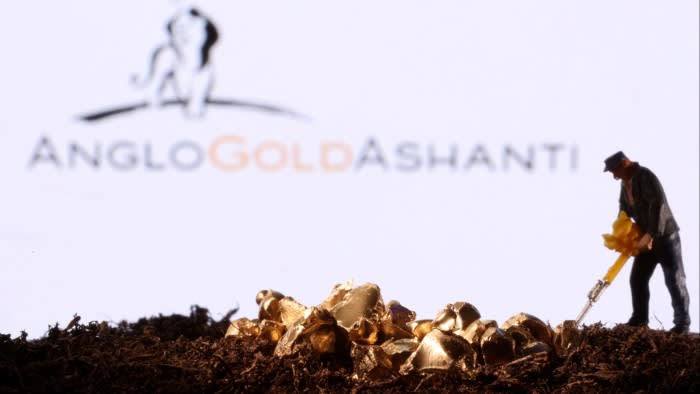Unlock the Editor’s Digest for free
Roula Khalaf, Editor of the FT, selects her favourite stories in this weekly newsletter.
The great gold roll-up has been a long time coming. Transactions in the space may have been eye-catching, such as Newmont’s $19bn bid for Newcrest last year, but they are best characterised as a trickle. AngloGold Ashanti’s £1.9bn bid for UK-listed Centamin is a sign that the pressure for consolidation is building.
The US-listed miner is taking advantage of its glittering share price run to nab itself a reasonable deal. At Monday’s close, Anglo’s stock was up almost 60 per cent, year to date, compared with Centamin’s 20 per cent rise. That means it can afford to offer a chunky 37 per cent premium and still value Centamin at just 3.9 times this year’s ebitda, on Morgan Stanley numbers, compared with its own 4.5 times. Synergies have been hinted at rather than quantified: there will be some head office and procurement savings. It may also be able to make more of Centamin’s star asset, the low-cost Sukari gold mine in Egypt, given its larger balance sheet and operational capabilities.
Investors should expect more of this sort of opportunistic bid. The gold sector needs consolidation. It is fragmented, with tens of companies in the $1bn-plus market cap range. On top of that, under-investment in exploration has led to a dearth of new projects, and companies are increasingly keen to snap up each others’ resources.
Animal spirits will be stoked by the valuation differentials that have opened up in the sector. AngloGold is a prime example. But while miners’ performance has generally been underwhelming compared with that of the commodity, bigger groups have done better than their junior rivals. The GDX index, which primarily tracks gold and silver miners, is up 34 per cent over the past five years, twice as much as the GDXJ, which follows the smaller operators. While there are many exceptions to this rule of thumb, it chimes with the broader trend of mid-caps struggling to compete for investor dollars.
The continuing bull market in gold may well speed up this process. Jitters in the US equities market should divert flows to the sector. And the bigger companies are likely to capture more than their fair share of this generalist money than the plethora of smaller, higher-risk operators. Name recognition and analyst coverage play a part. But gold at $2,500 an ounce means that (for once) producing companies, which have an average all-in cash costs of about $1,950 per ounce according to Raj Ray at BMO, are also in a position to offer reasonable yields.
As they regain shine in investors’ eyes, they will be in a better position to pan the sector for nuggets.
camilla.palladino@ft.com


